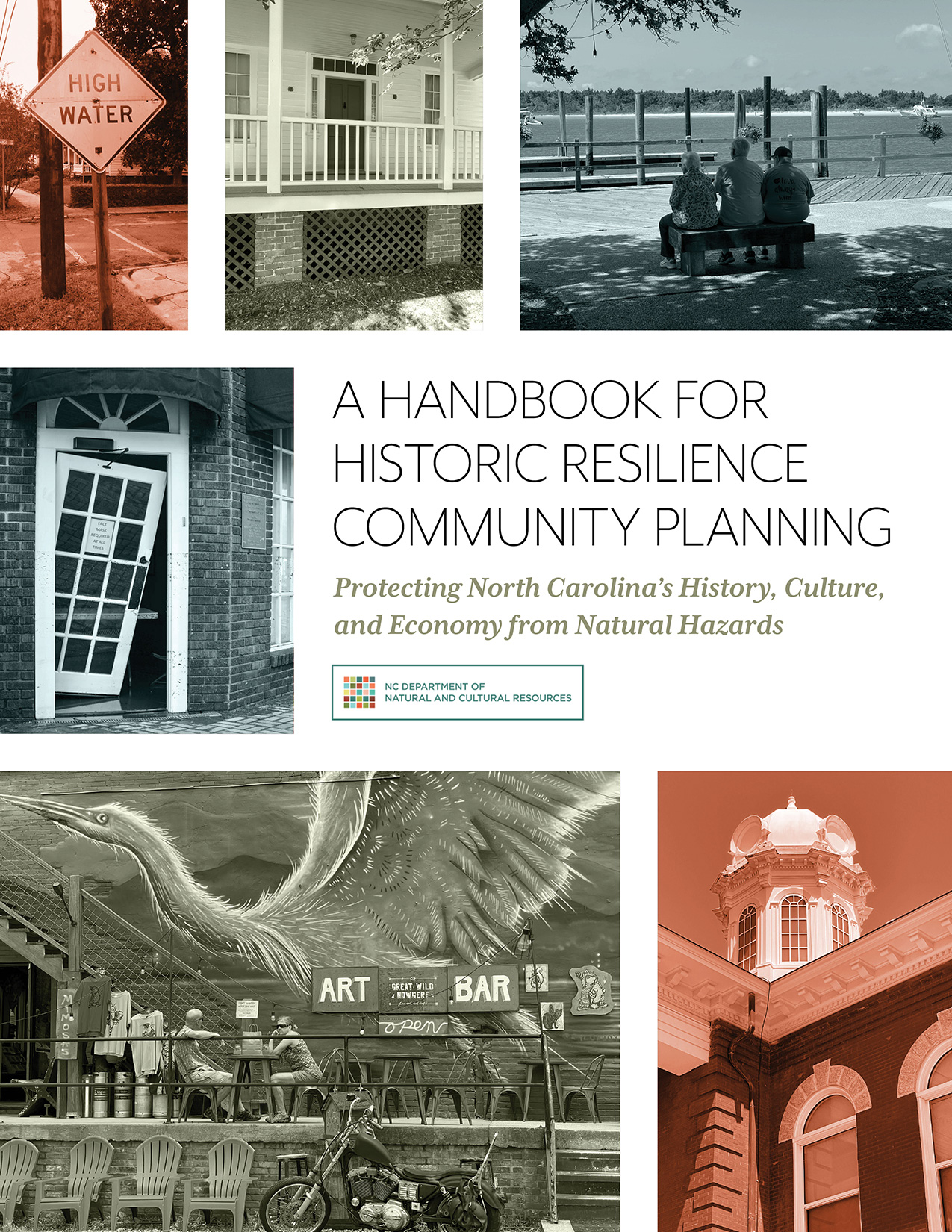A Handbook for Historic Resilience Community Planning
In August 2021, when Tropical Storm Fred hit western North Carolina, a Transylvania County resident told reporters that water gushed into her front yard “like a rushing river.” A Cruso resident said the floodwaters lifted his house off its foundation. Downtown Canton was submerged under several feet of water, and the landmark Colonial Theatre was swamped. Significant parts of the town’s history were at risk of being destroyed. As the frequency and intensity of storms increase, stories like these are becoming more common.
According to A Handbook for Historic Resilience Community Planning, we need to act now: the thirty-four weather-related disasters that the state experienced from 2016–2021 cost up to $50 billion. We’re facing threats not only to our personal safety and private property but also to the historic buildings and sites that contribute to North Carolina’s vibrant local cultures, healthy local economies, and the sense of connection we have with each other and the places where we live. The Handbook lays out a strategy of resilience, leading community planners through a seven-step process that enables them to identify and protect their cherished historic resources for generations to come.
The Historic Resilience Project
The Historic Resilience Project offers guides, workshops, and training materials for planning professionals, preservation commissions, property owners, and anyone interested in protecting the state’s irreplaceable cultural resources.
Visit the Historic Resilience Project website to download a free PDF of the handbook and two related publications—Historic Resilience Primer and Resilience Design Standards. The website also has information about upcoming workshops led by Adam Lovelady in Asheville’s Biltmore Village, New Bern’s historic downtown, and other notable locations around the state.





